Afghanistan
page 2
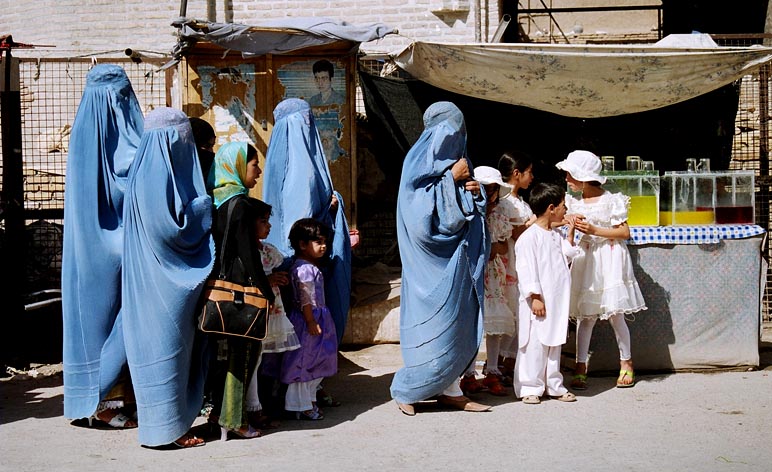 Women and children
wait at a taxi stand near one of the entrances to the vibrant city
bazaar in Herat.
Women and children
wait at a taxi stand near one of the entrances to the vibrant city
bazaar in Herat.
bla
bla
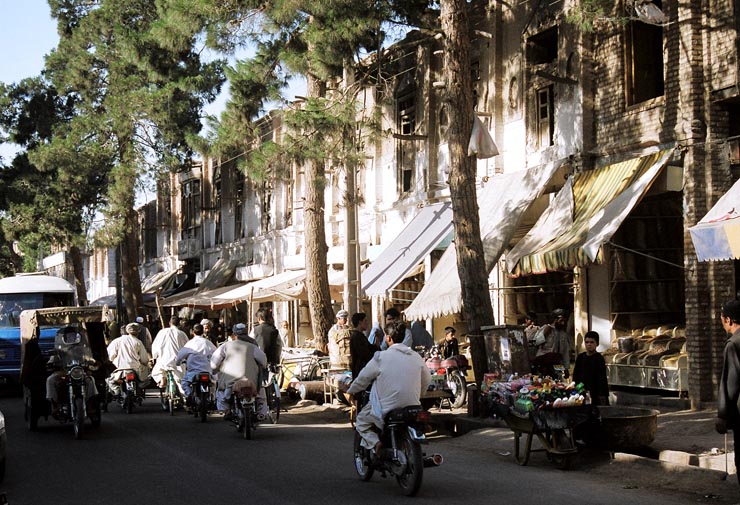
After seeing some of the pine tree-lined
avenues in Herat, you'd never guess that you were in Afghanistan with
its stark desert climate.
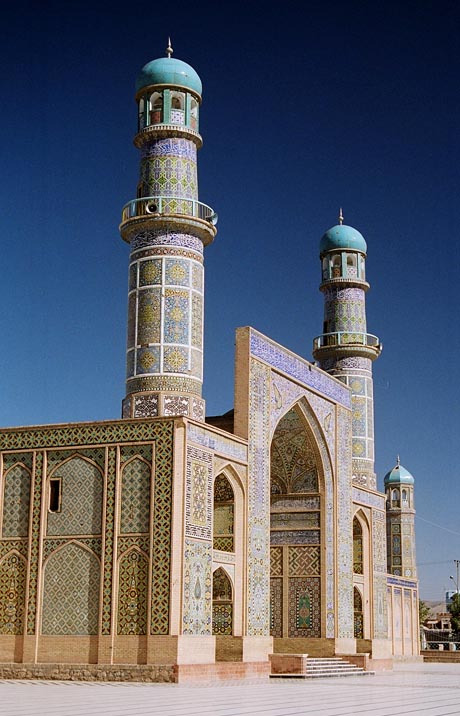
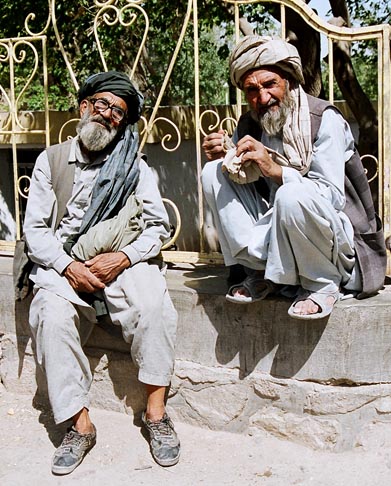
The
Masjid Jameh (left) and bazaar denizens of Herat (right).
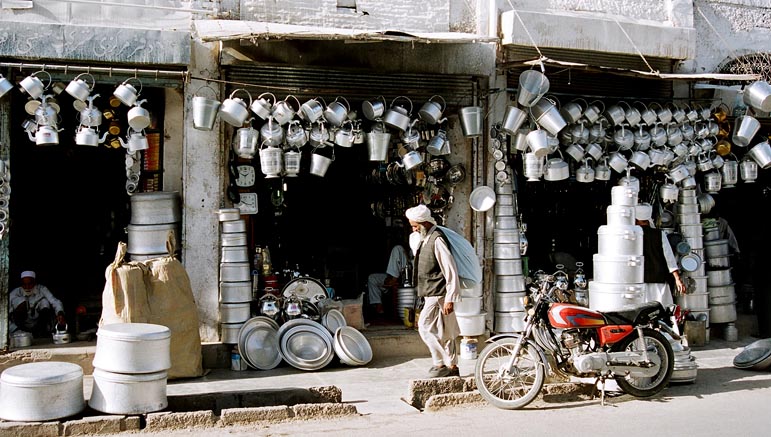
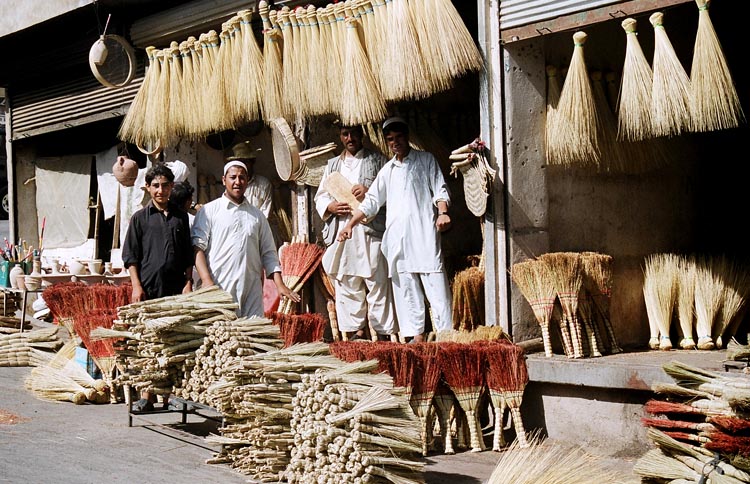
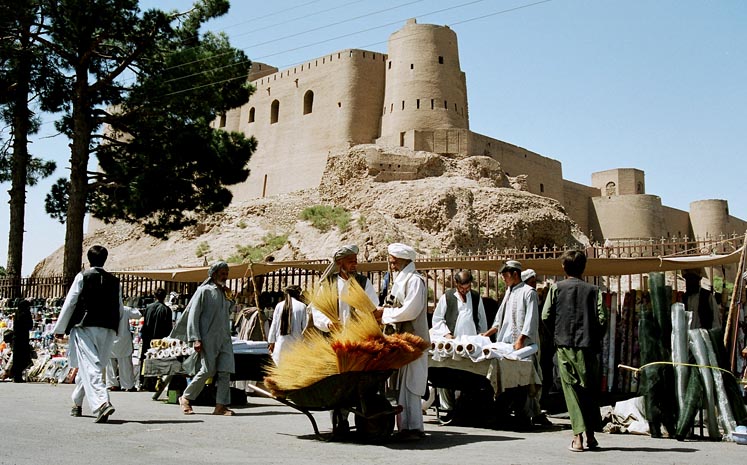
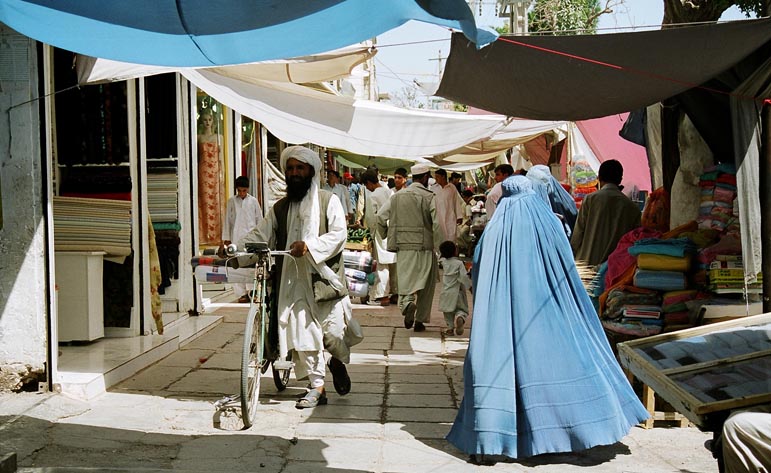
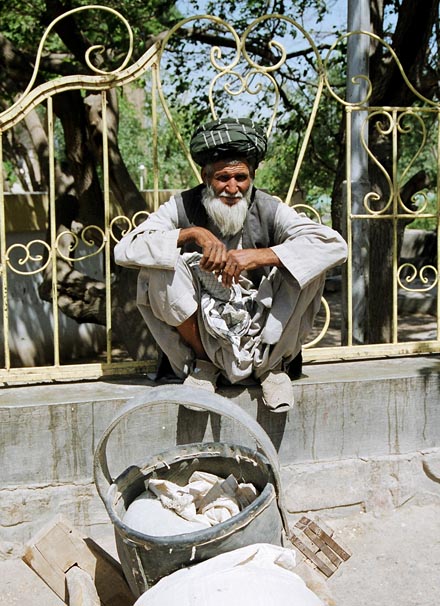
Scenes from the Herat bazaar,
situated under the newly restored Citadel, once coveted as a strategic
nexus between the Russian, Persian and British empires.
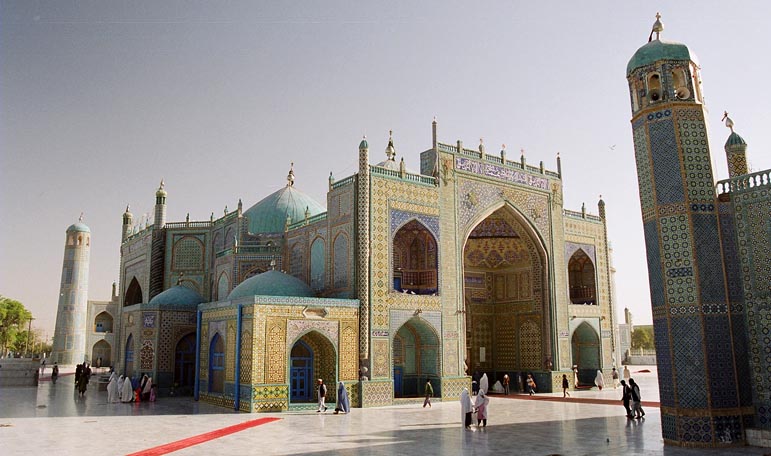
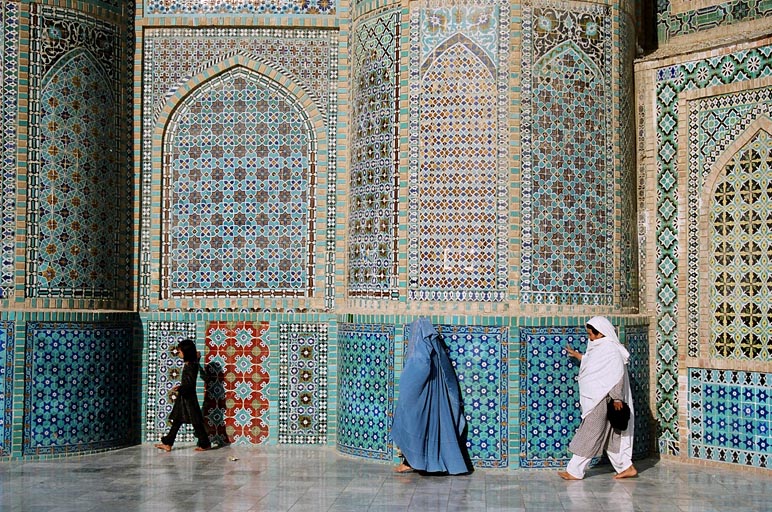
The most breathtaking single building in
Afghanistan has to be the timurid-style Shrine of Hazrat Ali in the
northern city of Mazar-e Sharif, populated mostly by ethnic tajiks and
uzbeks.
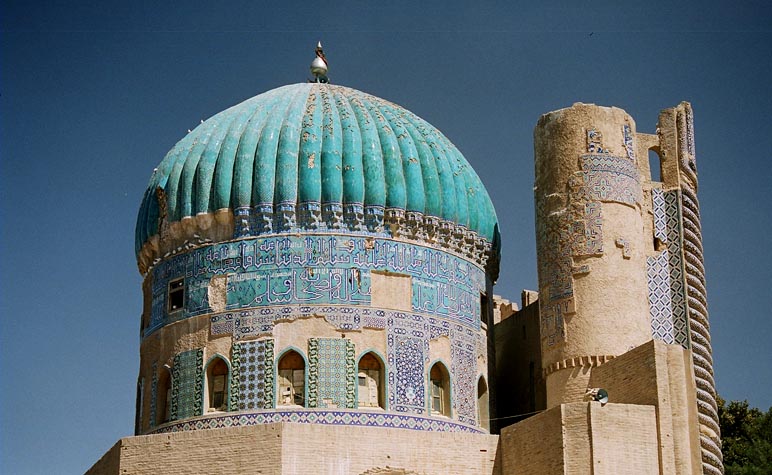
The Khoja Abu Nasr Parsa shrine,
crumbling reminder of the former glory of Balkh, heart of the Bactrian
empire. After the spiritual leader Hazrat Ali's body was said to
be buried nearby, the modern city of Mazar-e Sharif was built around
it, leaving Balkh to recede back into a bucolic village.
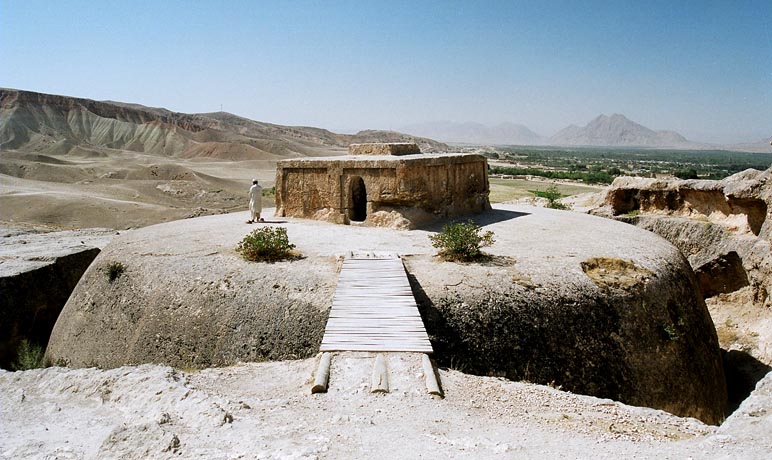
One of the lesser-known curiosities of
Afghanistan is the Takht-e Rustam monument in Samangan province,
between Mazar-e Sharif and Kunduz in the north. Here you see the
top of the massive Buddhist stupa that was created by excavating
a ditch around the perimeter, large enough for entire
schoolgroups to walk around the base of the stupa. Many
archeological reminders of the Buddhist era in Afghanistan survived,
most notably the Giant Buddha statues of Bamiyan (until 2001), but like
elsewhere, the local muslim population has also adopted the sites for
worship. On top of the Takht-e Rustam (Rustam's throne), my
muslim rickshaw driver from the neighbouring town of Aybak does his
midday prayers while I walk around taking pictures.
blablabla
BACK
to AFGHANISTAN page 1
BACK
to HOMEPAGE












